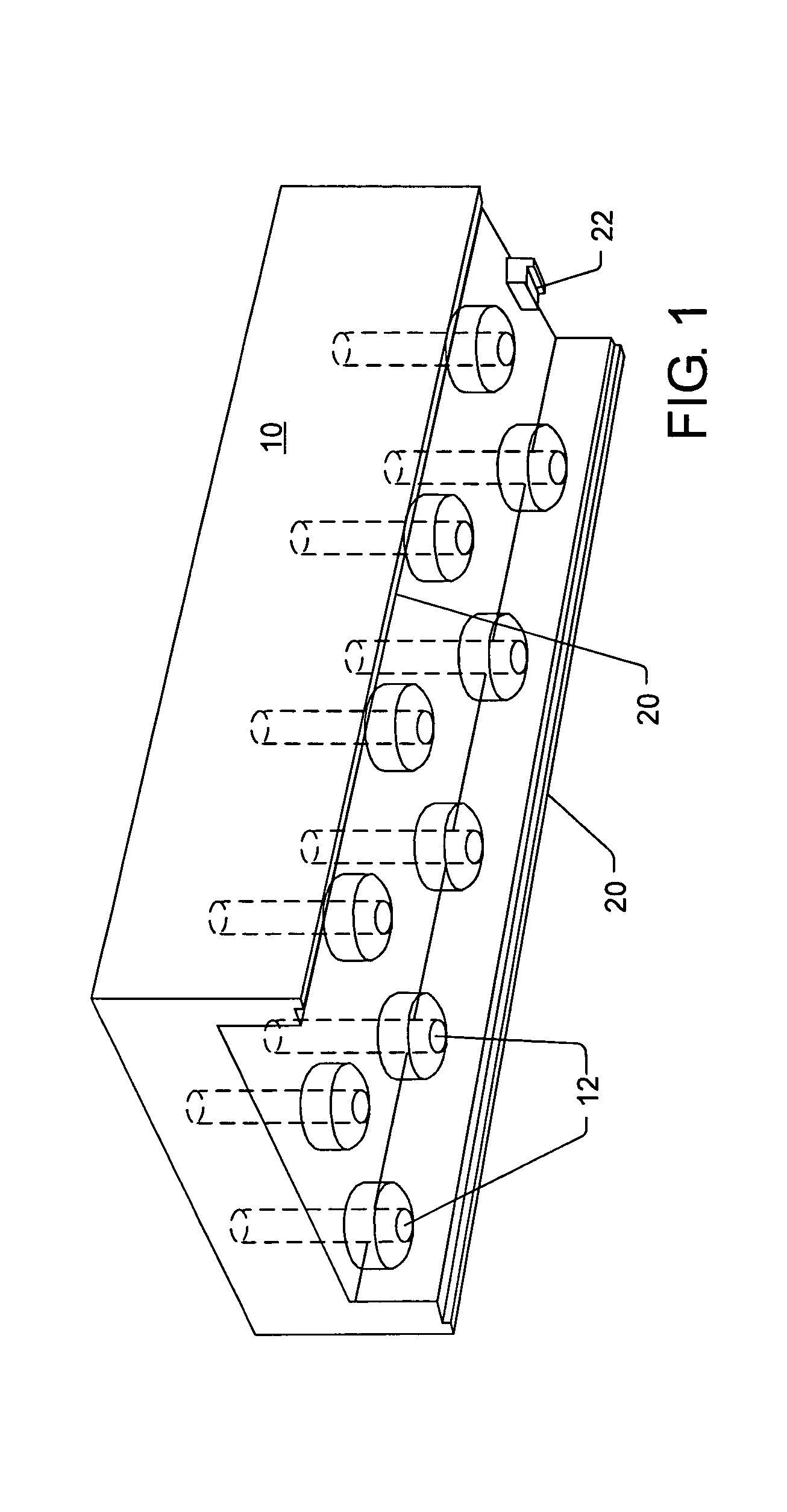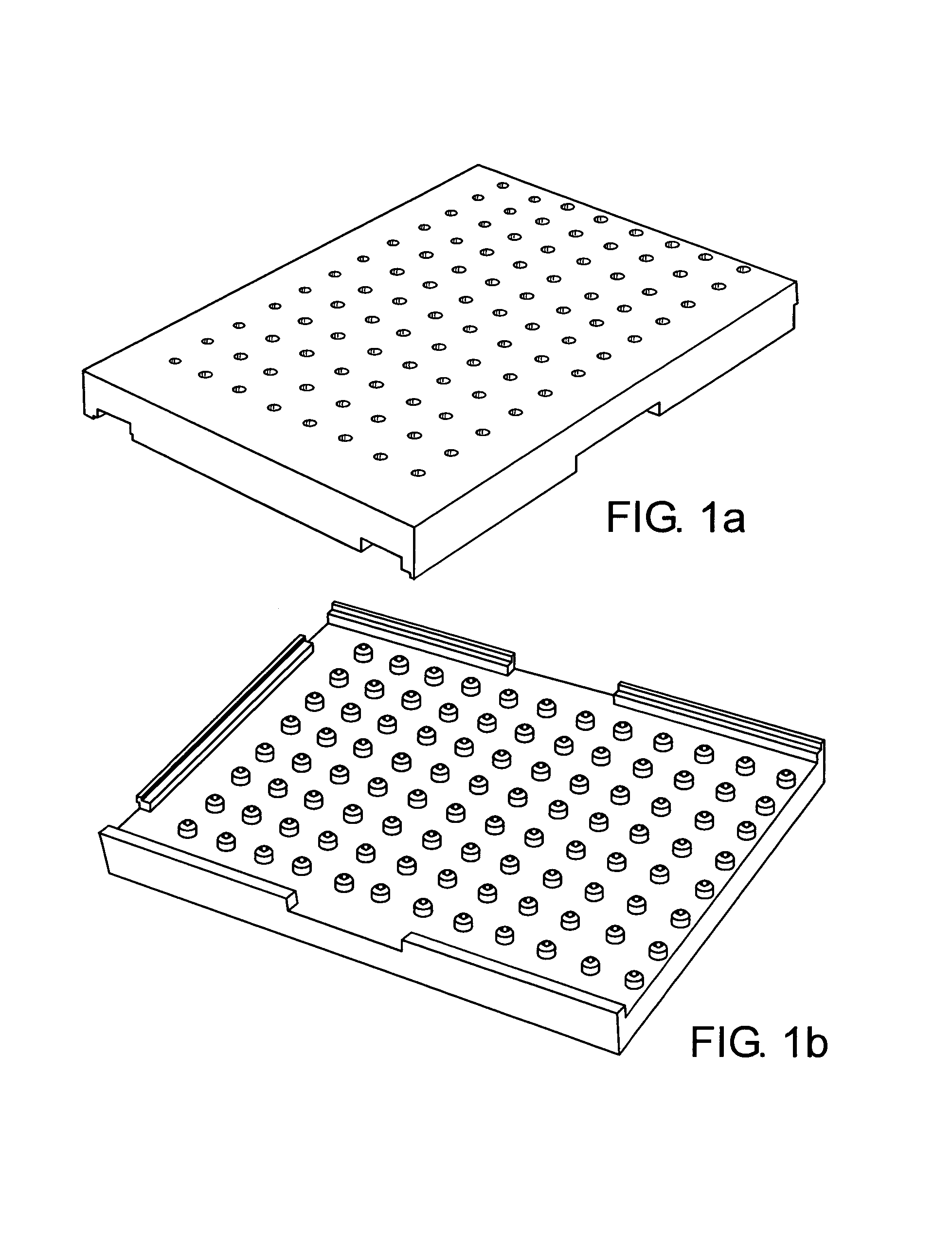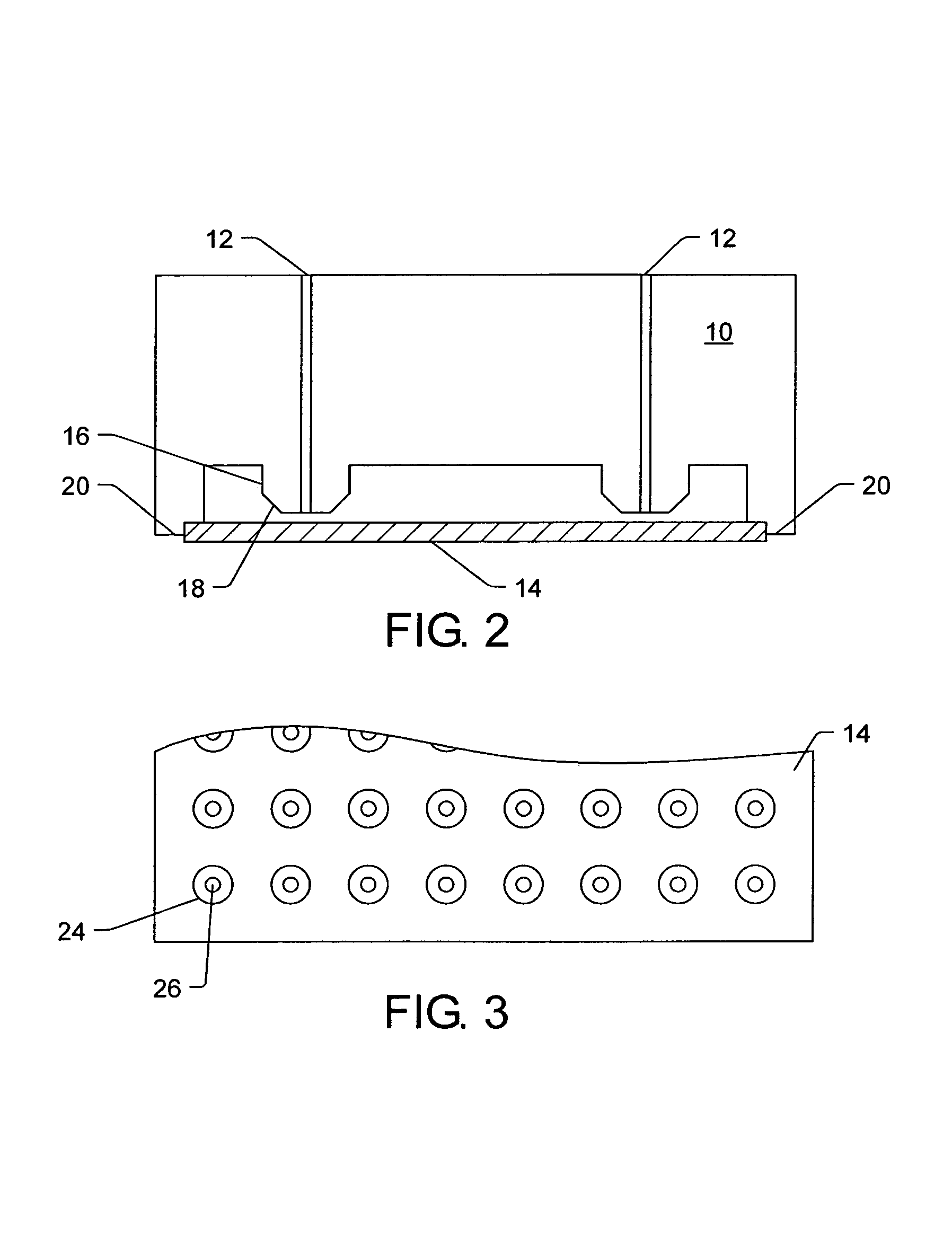Cell migration inhibiting compositions and methods and compositions for treating cancer
a composition and cell technology, applied in the direction of nitro compound active ingredients, antibody medical ingredients, instruments, etc., can solve the problems of cumbersome methods for studying cell migration, and large amount of reagents required for cell migration
- Summary
- Abstract
- Description
- Claims
- Application Information
AI Technical Summary
Benefits of technology
Problems solved by technology
Method used
Image
Examples
example 1
Screening a Library of Chemicals for Cell Migration Inhibition
[0275]FIG. 6 is a plot illustrating results of a screening experiment using chemicals selected from a library and cancer cells. The screening experiment was carried out as described above. The cancer cells used in the experiment are glioma cancer cells. Cell migration of cancer cells was measured in the presence of chemicals selected from the library. The cell migration was measured as described above and is shown on the y-axis in units of μm / day. The samples are shown on the x-axis, and the chemicals or untreated control samples are indicated by well number. As shown in FIG. 6, a plurality of chemicals from the library were screened and several of the chemicals shown markedly reduced migration in comparison to untreated control samples of the cancer cells and most of the treatment wells. For example, chemicals in wells labeled 1, 8, 58, and 66 show markedly reduced migration in comparison to the untreated and other treat...
example 2
Dose Response Curve of Glioma Cancer Cells to a Cell Migration Inhibitor
[0276]FIG. 7 is a plot illustrating cell migration rate, in units of μm / day, as a function of concentration of 4′-propyl-bicyclohexyl-4-carboxylic acid, in units of μM. This chemical was selected from a plurality of chemicals from a library because cancer cells treated with the chemical had a lower cell migration rate than untreated cancer cells. Therefore, several samples of glioma cancer cells were treated with various concentrations of the chemical. The glioma cancer cell line is SF 767. The concentration was varied from 0.000 μM to 2.00 μM of 4′-propyl-bicyclohexyl-4-carboxylic acid. The cell migration rate of each sample of the cancer cells was measured as described above. The dose-response curve shown in FIG. 7 illustrates the measurement results. As shown in FIG. 7, the cell migration rate decreased from almost 450 μm / day at a concentration of 0.000 μM to about 50 m / day at a concentration of 200 μM. There...
example 3
Synergy of a Cell Migration Inhibitor and a Chemotherapeutic Agent
[0277]FIG. 8 is a bar graph illustrating % killing of cancer cells, in units of % dead cells, as a function of concentration of a chemotherapeutic agent and a chemotherapeutic agent in combination with a cell migration inhibitor, in units of μg / ml. The glioma cancer cell line is SF 767, which is described above. The chemotherapeutic agent is 1,3-bis(2-chloroethyl)-1-nitrosourea (BCNU), which is a currently approved chemotherapeutic agent commercially available from Bristol Myers Squibb. The cell migration inhibitor is 4′-propyl-bicyclohexyl-4-carboxylic acid. The killing of glioma cancer cells using BCNU and a combination of BCNU and 4′-propyl-bicyclohexyl-4-carboxylic acid was measured five days after initial treatment. As shown in FIG. 8, the combination of BCNU and 4′-propyl-bicyclohexyl-4-carboxylic acid exhibits higher killing percentages than BCNU alone. Therefore, the combination of BCNU and 4′-propyl-bicyclohe...
PUM
| Property | Measurement | Unit |
|---|---|---|
| Chemotherapeutic properties | aaaaa | aaaaa |
Abstract
Description
Claims
Application Information
 Login to View More
Login to View More - R&D
- Intellectual Property
- Life Sciences
- Materials
- Tech Scout
- Unparalleled Data Quality
- Higher Quality Content
- 60% Fewer Hallucinations
Browse by: Latest US Patents, China's latest patents, Technical Efficacy Thesaurus, Application Domain, Technology Topic, Popular Technical Reports.
© 2025 PatSnap. All rights reserved.Legal|Privacy policy|Modern Slavery Act Transparency Statement|Sitemap|About US| Contact US: help@patsnap.com



